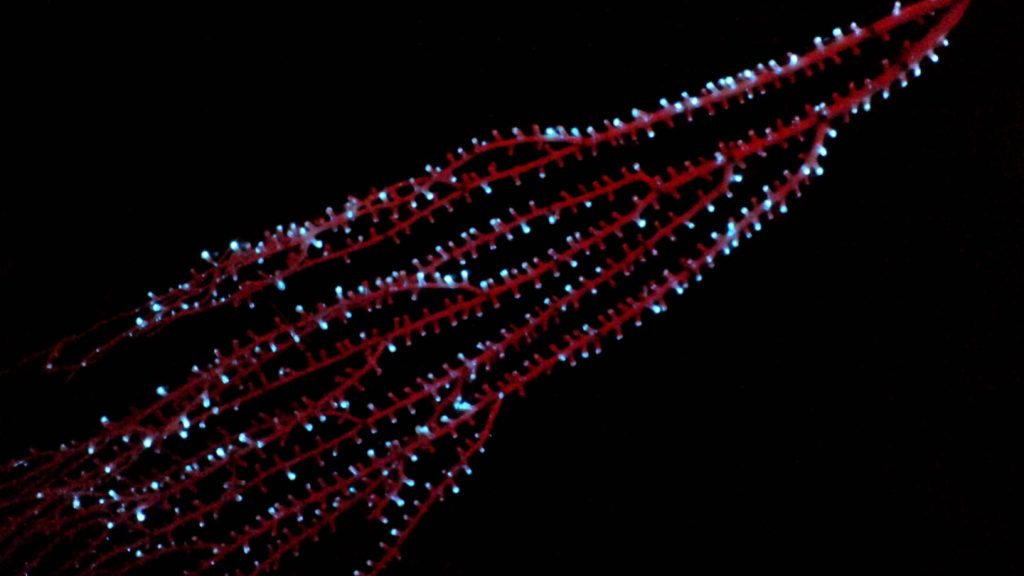The origins of bioluminescence have been pushed back by nearly 300 million years, according to new genetic and fossil analyses. The deep, dark ocean was illuminated by bioluminescent corals over half a billion years ago. The ability to produce light has evolved over 100 times across different species, aiding in hunting, attracting mates, and evading predators. The study focused on octocorals, a subgroup of corals that often live in the deep sea and are known for their bioluminescence.
By analyzing the DNA of 185 octocoral species, researchers were able to create an evolutionary tree showing the genetic similarities among these species and estimate when lineages split into separate branches. The team calculated the probability of coral ancestors being bioluminescent based on when glowing species evolved and where they are located on the evolutionary tree. It was concluded that the ancestor to all octocorals was bioluminescent and lived around 540 million years ago.
The volatility of bioluminescence in evolution makes octocorals’ bioluminescence surprisingly old. It can easily originate and be lost, according to evolutionary biologist Todd Oakley. The study raises questions about whether the evolution of bioluminescence played a role in driving the diversification of octocorals as a group. Bioluminescence may have emerged as a byproduct of other ancient cellular chemical reactions that were later co-opted into signaling and communication, providing animals with an evolutionary advantage.
Researcher Jessica Goodheart, from the American Museum of Natural History, is interested in understanding how the evolution of bioluminescence influenced the diversification of octocorals. While octocorals represent one of the oldest known bioluminescent groups, limitations in the fossil record make it challenging to determine when bioluminescence first appeared in other organisms like bacteria, algae, and comb jellies. Despite this, the findings shed light on the ancient origins of bioluminescence on Earth.















